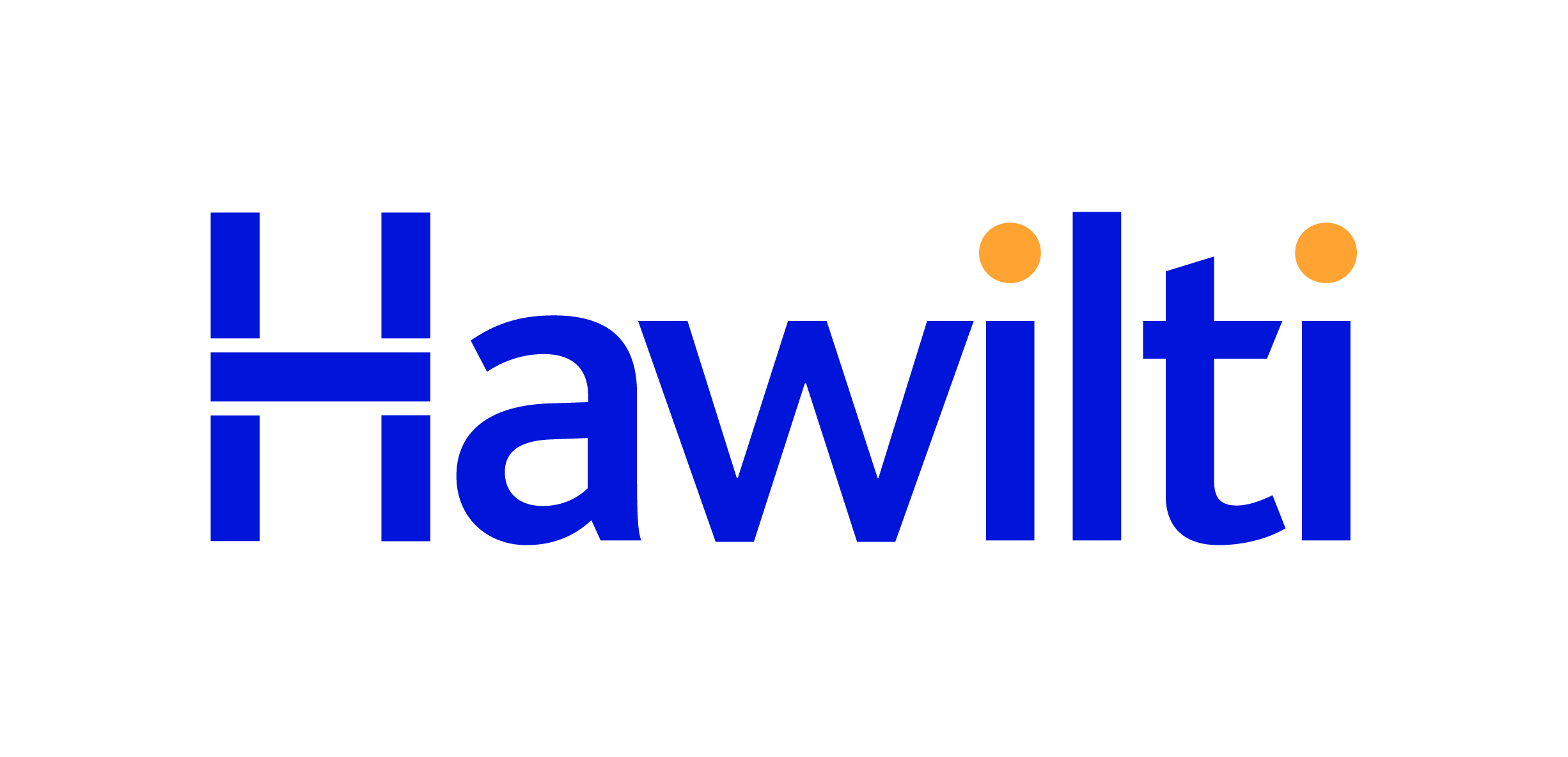Energy

Dhirubhai-1 FPSO likely contender for redeployment on Pecan field offshore Ghana
Ocean Yield’s Dhirubhai-1 FPSO, which had been contracted by Reliance Industries offshore India from September 2008 to September 2018, is the likely contender to be redeployed offshore Ghana for the development of the Deepwater Tano Cape Three Points block where lies the Pecan field. The vessel was converted in 2008 and has a oil production capacity of 60,000 barrels of oil per day (bopd). Ocean Yield is majority-owned by Aker Capital, whose company Aker Energy Ghana is the operator of the Deepwater Tano Cape Three Points block offshore Ghana. While KKR is set to take over the management of Ocean Yield from Aker Capital, Aker Energy still has an option to acquire the FPSO for its Ghanaian deep-water project. Aker Contracting FP ASA, an indirect subsidiary of Ocean Yield, and Aker Energy have notably entered into an agreement under which Aker Energy is granted an option to acquire the FPSO for $35m. However, the option is exercisable within a very particular timeframe: at the earliest 16 business days prior to settlement of KKR’s upcoming voluntary cash tender offer, and no later than 15 December 2021. Because Aker Energy had previously paid Ocean Yield $17.9m as compensation for prior options on the same FPSO and related services, Aker Energy’s total investment to purchase the FPSO will amount to $52.9m, shall the option by exercised. Discovered in the early 2010s by American independent Hess Corporation, the Pecan field is expected to be Ghana’s next major offshore oil & gas project. By the time the Aker Group acquired operatorship in 2018, Hess had already made seven discoveries, out of which all but one (Cob-1) had been declared commercial. The project has always been a priority for Ghana and targeted first oil by 2021, but suffered several delays, first because of the maritime boundary dispute between Ghana and Côte d’Ivoire, settled in 2017, then because of the Covid-19 pandemic. In March 2020, Aker Energy notably issued a notice to Yinson Holdings terminating the Letter of Intent for the FPSO’s charter, operations & maintenance contract it had initially planned to award to the Malaysian contractor. Since then, Aker Energy Ghana committed to finding a revised phased development to move the project forward, including via an alternate concept based on the utilisation of two small-sized FPSOs: one redeployed FPSO on the crest of Pecan in Phase 1 and another one in the North of Pecan to tie back additional resources in the northern part of the field in Phase 2. However, Ghanaian authorities have grown impatient and in August 2021, Minister of Energy Hon. Dr. Matthew Opoku Prempeh presented a paper to Ghana’s Parliament according to which the state-owned Ghana National Petroleum Corp (GNPC) would acquire a 37% additional interest in the Deep Water Tano/Cape Three Points (DWT/CTP) Block. The same day, Minister of Finance Hon Ken Ofori-Atta had presented a Loan Agreement between the Government of Ghana and GNPC Explorco for the grant of a loan of up to $1.65bn for the company to meet its payment obligation to acquire the shares in Aker Energy Ghana while also contributing to a Capex of $350m over the 2021-2024 period to achieve first oil from Pecan Phase 1.
Read more »
TechnipFMC sees $3bn of subsea opportunities in Africa within 24 months
TechnipFMC sees subsea opportunities across Nigeria and Angola totaling between $3bn and $5bn within the next 24 months, the company said during its Q2 2021 earnings conference call.The subsea market in the region will be heavily driven by TotalEnergies’ projects in Angola. These notably include the development of the Begonia (Block 17/06) and Cameia (Block 21) fields, but also the execution of two subsea tieback projects on producing blocks. These include Cravo, Lirio, Orquidea and Violeta (CLOV) Phase 3 on Block 17 and the ACCE project on Block 31 (an acronym for the Alho, Cominhos and Cominhos East fields). Block 17 has been subject to significant subsea activity recently, with the commissioning of Zinia 2 earlier this year and the ongoing execution of Dalia 3 and CLOV 2. Also offshore Angola, TechnipFMC expects to see contracts awarded for the development of Eni’s recent discovery on Block 15/06. Meanwhile, the integrated energy services provider sees two projects moving forward in Nigeria that could support the subsea market in the country. One is the development of the Preowei field on OML 130, operated by Total and whose field development plan has been approved since 2019. The other one is further development of the Shell-operated Bonga asset on OML 118. In May 2021, new agreements were executed for OML 118 between the NNPC and contractor parties SNEPCo (Shell), ExxonMobil, Total and NAOC (Eni).
Read more »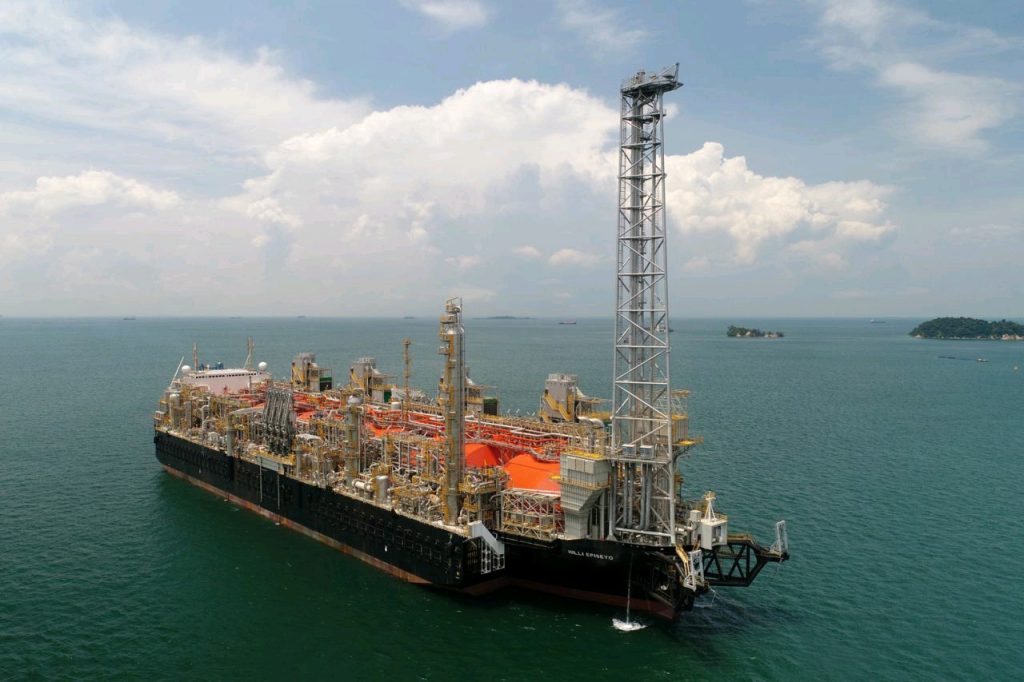
FLNG Hilli Episeyo to increase utilisation by 200,000 tons in 2022
Partners on the 2.4 million tonnes per annum (mtpa) Hilli Episeyo floating LNG export terminal offshore Cameroon have agreed to expand capacity utilization by 200,000 tonnes in 2022 and possibly by another 400,000 tonnes from 2023. The project involves national oil company SNH, independent upstream operator Perenco and global LNG infrastructure operator Golar LNG. The Hilli Episeyo is sub-Saharan Africa’s first floating LNG unit. Since its commissioning in 2018, it has operated at half capacity (1.2 mtpa), which will be increased to 1.4 mtpa next year. The capacity increase will be accompanied by the drilling and appraisal of two to three incremental gas wells by the end of 2021 and an upgrade of upstream facilities next year. At the end of 2020, Perenco had already completed works on the Sanaga 2 gas compression platform, which fall within phase 2 of the FLNG project and is already supporting gas production levels at the Hilli Episeyo. Additional capacity utilization could still be further achieved in the near future. “Under the Agreement, Perenco and SNH are granted an option (“Option”) to increase capacity utilisation of Hilli by up to 400,000 tons of LNG per year from January 2023 through to the end of the current contract term in 2026. This has the potential to increase total annual LNG production from Hilli to 1.6 million tons from January 2023 onwards,” Golar LNG said in a statement yesterday. The Hilli Episeyo FLNG project develops Cameroon’s gas both for exports and for the domestic market. While all produced LNG is sold to Gazprom Marketing & Trading, the unit also produces up to 5,000 bpd of condensates and up to 30,000 tonnes of LPG for local consumption. As a result, Cameroon’s LPG imports were reduced by half following completion of all associated gas infrastructure three years ago. The project required substantial infrastructure development, including at the existing onshore Bipaga gas treatment plant which had until then been used to process and supply gas to the 214 MW Kribi gas-to-power plant. On top of 56km of pipeline infrastructure, new facilities were built to provide for the smooth operations of both projects, and the production of condensates and LPG. Full details on the Hilli Episeyo FLNG are available in the “Projects” section within your Hawilti+ research terminal.
Read more »
BW Energy’s discovery at Hibiscus North proves smaller than expected
Following the disappointing results of its Hibiscus Extension (DHIBM-2) well on the Dussafu Marin permit earlier this year, BW Energy has discovered oil at Hibiscus North via the DHBNM-1 exploration well. The well had a geological analogue to the Ruche Field, where the Gamba structure was the primary target, and had estimated potential reserves of 10 to 40 million barrels of oil. However, upon completion of drilling by the Borr Norve Jack-up, reserves found were below the lower end of that pre-drill resource estimate. Discovered reserves will add up to the overall resource estimates of the shallow water Dussafu Marin permit where production started in 2018 from the Tortue field, and could potentially support a tie-back in the future. The overall license produced an average of 10,500 barrels of oil per day (bopd) in Q2 2021 and is a critical asset to maintain Gabon’s oil & gas output. Source: BW Energy BW Energy is currently preparing to execute a third development phase on the block with the Ruche Phase 1 project, which will follows Tortue Phase 1 and Tortue Phase 2. The Ruche development targets the Hibiscus and Ruche Fields located 20km northwest of the Tortue Field via the drilling of up to six horizontal production wells connected to a fixed wellhead platform, itself tied back to the existing BW Adolo FPSO. Current production forecasts expect a production peak of 39,000 bopd in 2024 when Tortue Phase 2 and Ruche Phase 1 are completed. Details on the development of the Dussafu Marin Permit are available in the “Projects” section within your Hawilti+ research terminal.
Read more »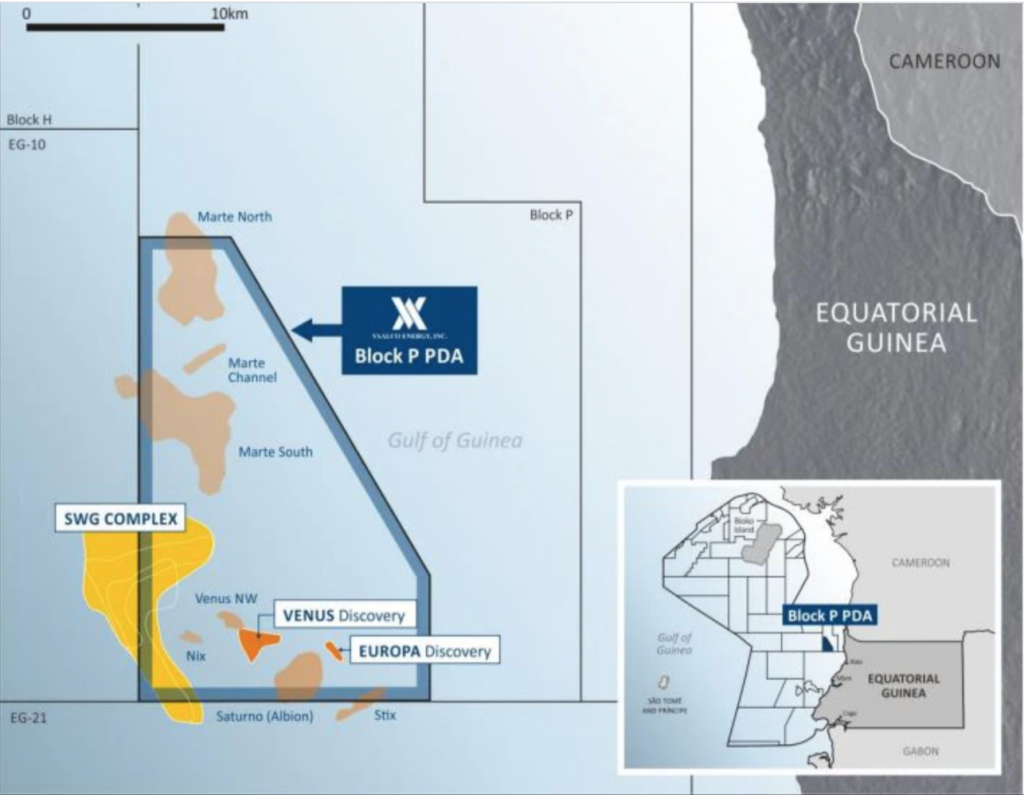
VAALCO to launch Venus development as a standalone project offshore Equatorial Guinea
VAALCO Energy has announced that it has completed the feasibility study for the development of the Venus discovery offshore Equatorial Guinea’s mainland. The discovery was made back in 2005 and is located within Block P, where VAALCO farmed in in 2012. The block’s estimated ultimate recovery (EUR) is of over 20 million barrels of oil equivalent. The company has negotiated a new amendment to the 2012 production sharing agreement and now expects to see its working interest increase to 45.9% upon approval of the Ministry of Mines and Hydrocarbons “The company is now proceeding to a field development concept and will work closely with the other joint venture owners to complete this over the coming months,” VAALCO Energy said in a statement last month. Once the development and production plan is approved, the PSC over Block P provides for a development and production period of 25 years. The announcement of a new standalone development project offshore Equatorial Guinea should be good news for a country that has struggled to reverse declining output in recent years. Equatorial Guinea currently produces about 110,000 barrels of oil per day (bopd) down from 160,000 bopd in 2016 according to OPEC data. Source: OPEC secondary sources
Read more »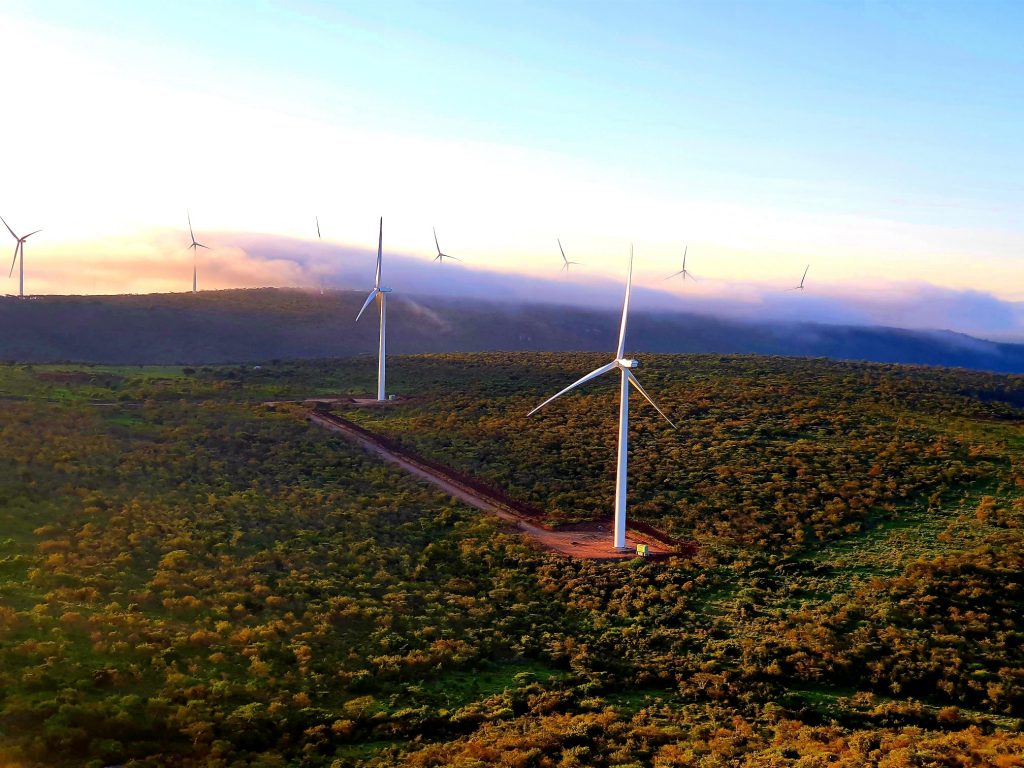
Kenya’s second biggest wind farm starts commercial operations
The 100 MW Kipeto wind farm has officially achieved commercial operations date as of Monday, July 5th. Majority-owned by Actis (88%) via BTE Renewables, Kipeto Energy is Kenya’s second largest wind energy facility after the Lake Turkana one. Kipeto Energy was originally conceived by Kenyan company Craftskills Wind Energy International (CWEIL) with support from General Electric. The $320m project received a boost with the entry of African Infrastructure Investment Managers (AIIM) and IFC InfraVentures in the 2010s. Both entities co-developed the project with Craftskills from 2014 until early 2018, executing a 20-year power purchase agreement (PPA) with Kenya Power and Lighting in 2016. Financial close was successfully achieved with the exit of AIIM and IFC InfraVentures in 2018, whose interests in Kipeto Energy were acquired by Actis. The project is now owned and operated by BTE Renewables (88%), majority-owned by Actis with the rest of the equity in Kipeto Energy Plc still held by CWEIL (12%). Details on the Kipeto Wind Farm are available in the “Projects” section within your Hawilti+ research terminal.
Read more »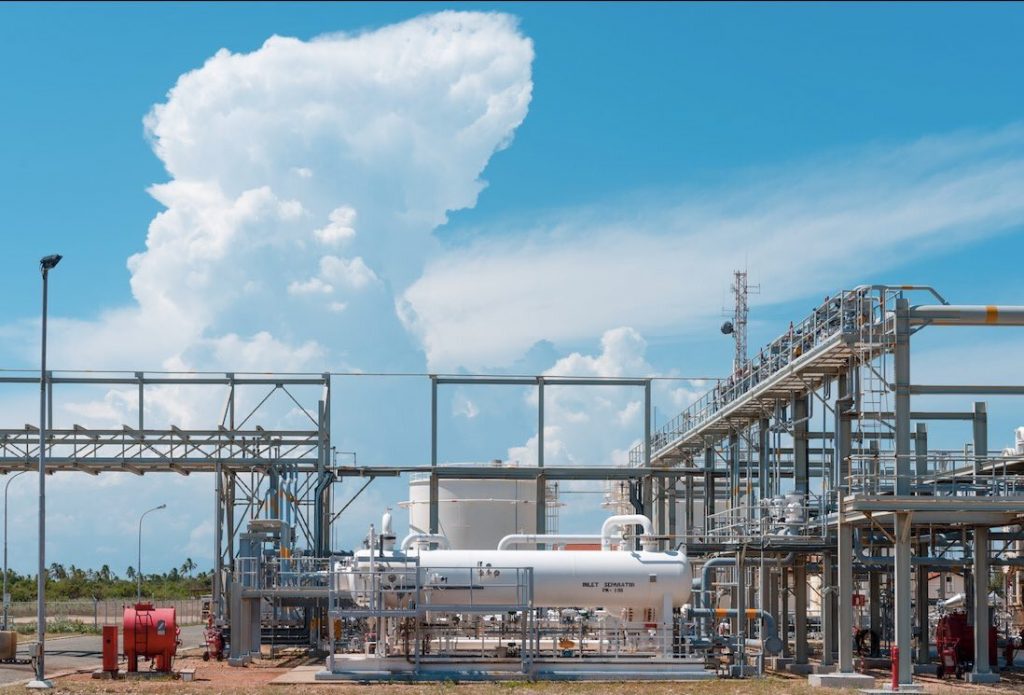
Orca Energy to execute $21.4m workover programme in Tanzania
PanAfrican Energy Tanzania, the subsidiary of the Orca Energy Group that operates the wells and gas processing plant at Songo Songo in Tanzania, has signed an agreement with Exalo Drilling for the workover of three onshore wells. Activities are set to start in September 2021 on Songo Songo Island. The 2021 workover programme will notably see the wells recompleted with corrosion resistant chrome tubing while returning two wells to production and ensuring the third well continues to produce safely. Songo Songo is Tanzania’s flagship gas project and currently supplies about 60% of Tanzania’s gas, mostly used for power generation. While PanAfrican Energy operates the wells and the 110 MMscfd gas processing plant, the Songo Songo development remains owned by Songas, itself majority owned by Globeleq. Only gas produced beyond a threshold of 44.8 MMscfd can be freely marketed and sold by PanAfrican Energy. Source: Orca Energy Group The first 45 MMscfd is classified as “Protected Gas” and is owned by the Tanzania Petroleum Development Corp (TPDC) and sold under a 20-year gas agreement expiring on July 31st, 2024. This gas is used by Songas to fuel its 190 MW Ubungo gas-to-power plant but is also used for distribution to the Tanzania Portland Cement Company, and for Tanzania’s village electrification programme. Such distribution is ensured by Songas’ infrastructure which includes the 105 MMscfd, 232km pipeline to Dar es Salam and a 16km spur line to the cement plant. Beyond 44.8MMscfd, the gas is classified as “Additional Gas” and can be freely commercialized by PanAfrican Energy. The company has been steadily increasing its production and sales of Additional Gas to support additional power generation facilities in Dar es Salam, power several industries and develop a growing Compressed Natural Gas (CNG) business.
Read more »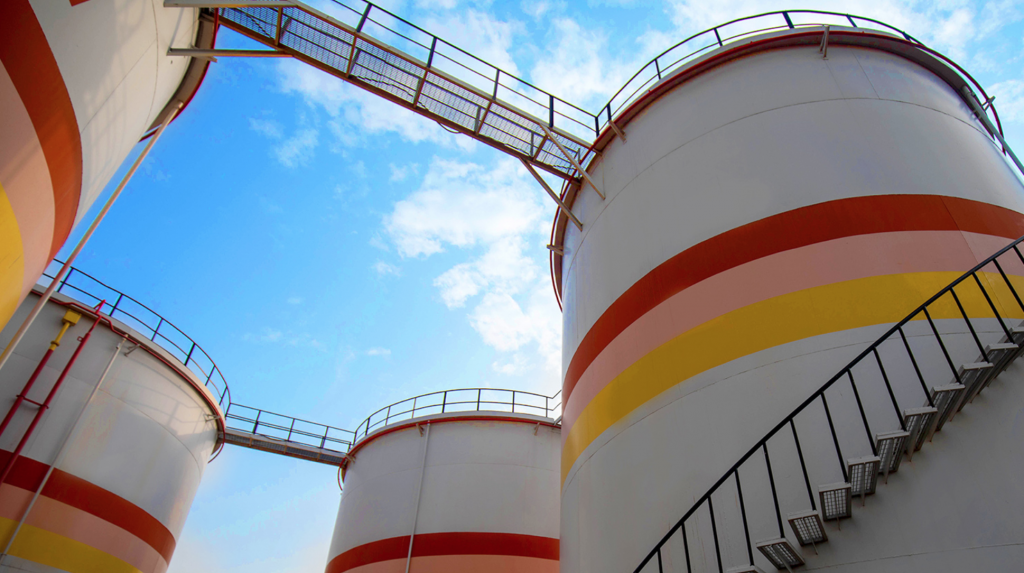
Sahara Tanzania doubles its petroleum products storage capacity
Earlier this year, Sahara Tanzania announced the expansion of its petroleum products storage capacity in the country to 72 million liters. Nigerian energy and power conglomerate Sahara Group has been present in Tanzania since 2015, starting with 10 loading arms and four storage tanks with a combined storage capacity of 36m litres. It has now expanded such infrastructure to 20 loading arms and eight storage tanks. The infrastructure expansion is ine line with the company’s commitment to support products availability in East Africa. Sahara Tanzania is in fact currently involved in expanding storage capacity of automotive gas oil, premium motor spirit and Jet A1. The company has notably committed to build two liquefied petroleum gas (LPG) tanks with a capacity of 6,000 cbm. Sahara Group is one of the largest and most integrated African energy and infrastructure conglomerates with significant business interests across the upstream, midstream, downstream, power generation and logistics & trading industries across the continent and globally. The group started in 1996 as Sahara Energy Resource to trade petroleum products, entering Ghana in 2000, Côte d’Ivoire in 2001, Tanzania in 2015 and Zambia and Guinea-Conakry in 2017. Since 2017, it has consolidated all its petroleum trading, marketing, distribution and storage activities under a single entity, Asharami Synergy.
Read more »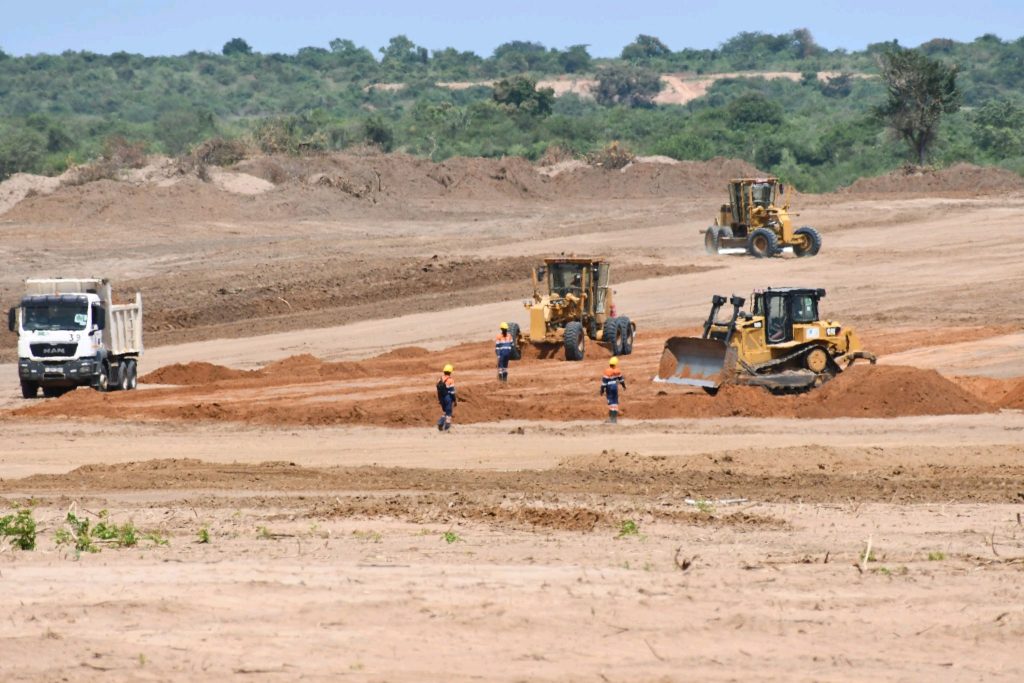
What does the EACOP Bill mean for Africa’s most controversial pipeline project?
Since TotalEnergies announced its acquisition of TullowOil’s shares in the Tilenga oil project and the East African Crude Oil Pipeline (EACOP), Uganda has crystalized a lot of the global tensions around the debate of development vs. environment. By developing the 1.7 billion barrels of contingent oil resources discovered around the Lake Albert, TotalEnergies is expected to produce 190,000 barrels of oil per day before the end of this decade, propelling Uganda into the club of African oil producers. The country would be producing as much as Ghana and Gabon currently, generating significant revenue for its state coffers. To export that oil to global markets, TotalEnergies is building the world’s longest heated crude oil pipeline, a 1,443km line linking Uganda’s oilfields to the Tanzanian port of Tanga. Once again, this means revenues for the state of Tanzania via transit fees. The integrated development will result into billions of dollars injected into both economies, support the development of infrastructure, and create jobs in the process. Despite growing opposition from environmentalist groups and NGOs, and the withdrawal of a few of its financiers, the project is progressing. On September 1st, the Ugandan Cabinet approved the EACOP Bill that gives significant support to the pipeline’s construction and operation by granting it four different fiscal packages. The Bill is seen as giving strong backing to the EACOP Company made of TotalEnergies (62%), UNOC (15%), TPDC (15%) and CNOOC (8%). The Government of Uganda, which had long delayed the initial takeover of TullowOil’s assets by TotalEnergies on the back of fiscal disagreements, is now getting generous. It is notably proposing tax packages on corporate income tax and value added tax (VAT) under which the EACOP Company will be exempt of the former for ten years and will be subject to zero rated VAT for its export of goods and services. The exemption of corporate income tax for ten years is significant given that the standard rate applied to resident and non-resident corporations in Uganda is of 30%. In addition, the EACOP Company is set to benefit from a package on withholding tax as well as an exemption from paying transit fees in Uganda. The withholding tax is fixed at 5%, following the terms set within the previously signed Host Government Agreement (HGA). The set of fiscal incentives granted to EACOP notably follows the withdrawal of several financiers and banks from the project. Earlier this year, BNP Paribas, Société Générale & Crédit Agricole reportedly withdrew their funding commitment on the back of human rights concerns
Read more »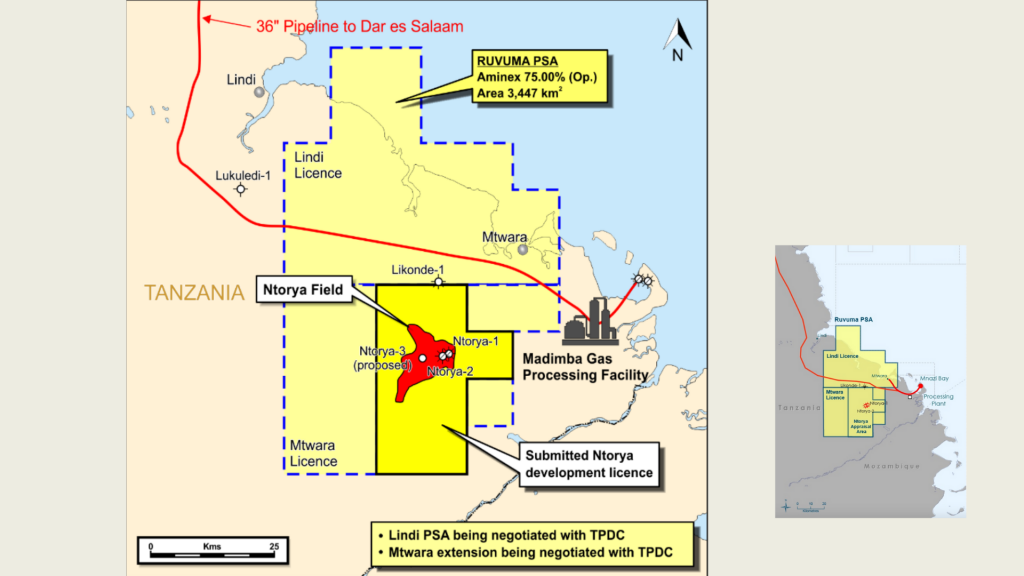
APT receives 2-year extension to meet gas exploration targets onshore Tanzania
ARA Petroleum Tanzania (APT), which took over the operatorship of the onshore Ruvuma PSA in Tanzania last year, has received a two-year extension of the license. The granting of the extension was necessary to complete key exploration activities on the block, including the acquisition of 200 km2 of 3D seismic data and the drilling of the Chikumbi-1 exploration and appraisal well (formerly known as Ntorya-3). Completion of the exploration programme will further support the conclusion of negotiations of the Gas Terms for the Ruvuma PSA and pave the way for the development of the Ntorya Gas Project. The development of the Ntorya gas accumulation has the potential to be Tanzania’s next big domestic gas project. Located in southern Tanzania where Maurel & Prom produces gas from the Mnazi Bay PSC since 2015, Ntorya used to be operated by Aminex’ subsidiary Ndovu Resources with a 75% interest before APT took over operatorship of the asset with a 50% interest last year. Aminex has since then retained a 25% interest in the license. The Ntorya accumulation is located within the onshore Ruvuma Production Sharing Agreement (PSA) signed in October 2005, which contains the Mtwara licence and the Ntorya development area, the latter being currently in negotiation. The PSA was operated by Tullow Oil until 2011 and saw the successful drilling of the Likonde-1 well in 2010, the Ntorya-1 well in 2012 and the Ntorya-2 well in 2017. Both Ntorya-1 and Ntorya-2 successfully tested gas with flow rates of 20 MMscf/d and 17 MMscf/d respectively, while Likonde-1 encountered gas shows. As a result, Ndovu applied to the Ministry of Energy for Tanzania in September 2017 for a 25-year development licence over the Ntorya area, with the application recommending the drilling of one well, the acquisition of 3D seismic over the Ntorya Field and the construction of a raw gas pipeline tied to the National Gas Gathering System at the Madimba plant, starting point of Mnazi Bay-Dar es Salam gas pipeline. In April 2020, Ndovu Resources secured a one-year extension of the Ruvuma Licence, almost three years after it applied for it. The extension did not provide enough time to complete the exploration programme, reason why new operator APT had to apply for another one which was secured a lot faster.
Read more »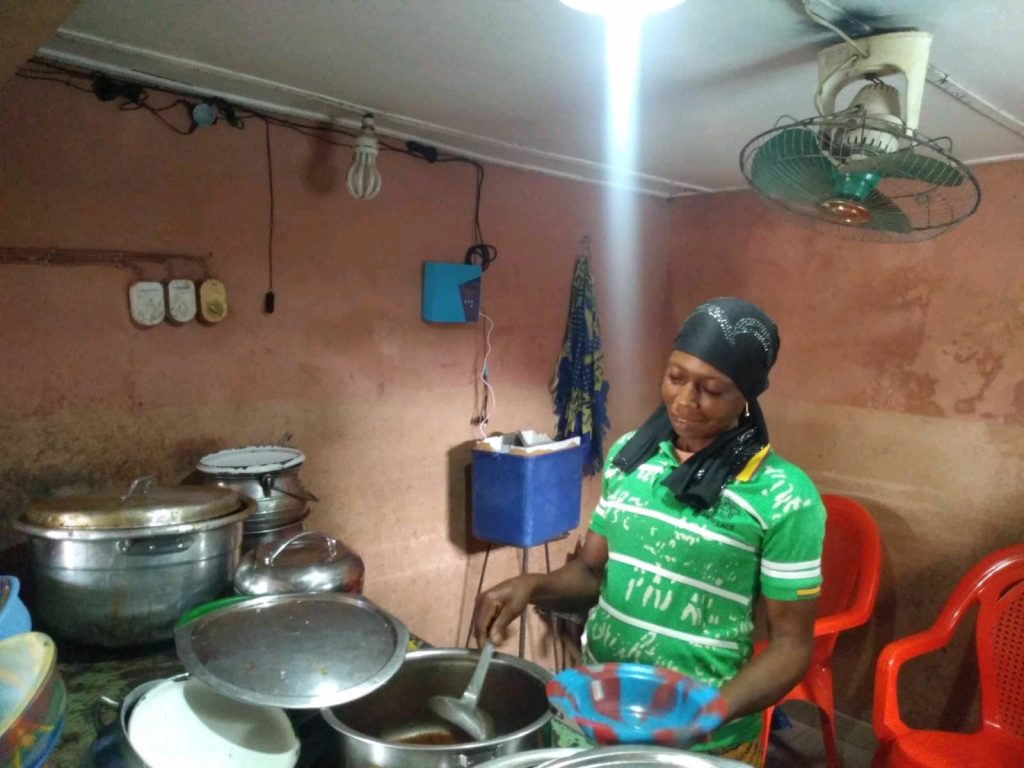
Advens Geocoton and Bboxx join hands to provide electricity to 2m Burkinabé
While Africa constitutes 17% of the world’s population, it only accounts for 6% of global primary energy consumption, according to 2018 data from the International Energy Agency (IEA). However, the continent is recording an ever-greater demand for energy, to support continued growth for more than two decades, interrupted only by the Covid-19 pandemic. To date, nearly 600 million Africans do not have access to electricity and one billion of them have no other alternative than traditional fuels such as wood and charcoal for cooking. In the G5 Sahel countries (Mali, Burkina Faso, Niger, Chad and Mauritania), of the 80 million inhabitants, 60 million live without electricity and are lit with kerosene or dry batteries. The Sahel is one of the regions in the world with one of the lowest energy access rates at 26%, compared to 47% in sub-Saharan Africa, according to the World Bank. Energy inequalities can be measured at the global, regional and local levels. In fact, African rural areas remains plunged into darkness. In the “land of upright men”, only 5% of the rural population have access to electricity (compared to 18% nationally). The Sahel Alliance, which was created in 2017,to support regional development and stability through several projects (particularly energy), aims to double the rate of access to energy between 2017 and 2022. To support this objective, Burkina Faso can rely on its institutional partners. The country also uses public-private partnerships (PPP), investors and manufacturers, as is now the case with the long-standing agro-industrial partner Advens Géocoton, which has been present in Burkina Faso for seven decades … A French-British Deal “We are already supporting 65,000 farms which support nearly 650,000 Burkinabes”, explains Karim Ait Talb, Deputy CEO of Advens Géocoton. The country has become the strategic center of the group’s activities in the sub-region. It will also open a new cotton ginning plant, for an amount of 15 million euros by the end of the year, in Ouargaye in the province of Koulpélogo. To go further, the joint venture announced at the end of July by Bboxx and Advens Geocoton (at 50% each) has set itself the objective of providing clean energy to 2 million Burkinabes, at competitive prices. This project will create 500 local jobs. “These will not be precarious contracts. These will be contracts for salespeople, technicians, marketing specialists, call-center agents and logisticians,” explains Karim Ait Talb. The partnership between Advens and Bboxx is based on a French joint venture (JV) which will own a Burkinabè company. The JV will offer 3 kit formulas including a solar panel, a battery, a management device connected to the cellular network, light bulbs, a telephone charger, a radio (or even a television and a fan, in addition). Eventually, additional services such as liquefied petroleum gas (LPG) cooking equipment or solar-powered water pumps will be available. “We offer ‘pay as you go’ formulas in urban and peri-urban areas, and monthly flat rates of around $5 per user in rural areas,” explains Karim Ait Talb. The solution is not revolutionary, but it is the after-sales service offered by Bboxx that makes all the difference in the eyes of Advens Geocoton. “We supervise a fragile population of agricultural producers and we have been looking for a solution for a while to improve their access to energy. However, it is not enough to install kits, it is still necessary to ensure their maintenance. This is precisely what Bboxx offers us through its Pulse platform, which offers real customer support,” he explains. Bboxx, the supplier of solar kits already operating in Rwanda, the Democratic Republic of Congo (DRC), Kenya, but also in Togo (through a partnership with EDF), will benefit from the establishment of the French agro-industrial operator in the sub-region, to develop its activities there. “This market entry is the first in a series, and we have before us a pipeline of exciting activities as part of our mission to transform lives through access to energy,” said Mansoor Hamayun, CEO and co-founder of Bboxx. Finally, solutions supported by the joint venture should be deployed in rural areas of other countries in West and Central Africa.
Read more »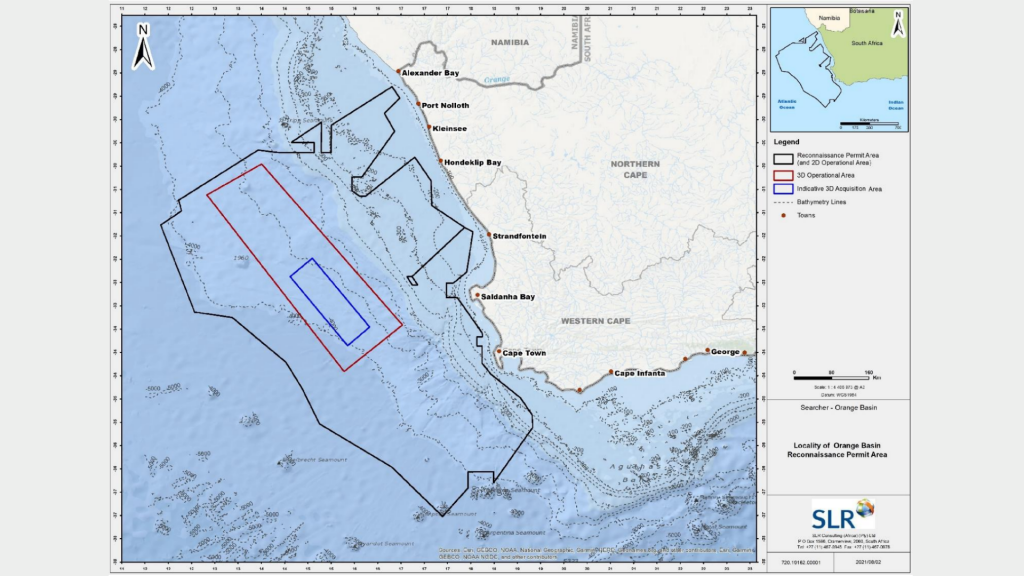
Exploration activity is heating up in the Orange Basin offshore South Africa
South Africa has been home to some of the world’s largest discoveries in recent years, with TotalEnergies opening up a new hydrocarbon’s province in the Outeniqua Basin via its Brulpadda (2019) and Luiperd (2020) discoveries. But as TotalEnergies and its partner work towards the set-up of an early production system on these discoveries, attention has turned further west to the Orange Basin. The Orange Basin covers most offshore areas from Cape Town up to the Namibian border. It notably contains the TotalEnergies-operated Block 2913b in Namibia and the Azinam-operated Block 2B in South Africa where the Venus-1 and Gazania-1 exploratory wells are expected to be spudded this year. In anticipation of increased drilling activity and potential world-class discoveries, seismic data providers Searcher and Spectrum (acquired by TGS in 2019) have been planning large seismic data acquisitions over the basin. Both companies are well-established players in the region. In November 2020, Searcher had already announced a new multi-client 2D and 3D seismic rectification project offshore South Africa, in collaboration with the Petroleum Agency of South Africa (PetroSA). Its seismic data currently stands at about 110,000 km of 2D and 15,000 km2 of 3D and covers the Outeniqua Basin and its sub-Basins: the Bredasdorp, Infanta, Pletmos, Gamtoos, Algoa and Southern Outeniqua Basins. Meanwhile, and following extensive long-offset acquisition and reprocessing programs between 2012 and 2019, Spectrum (now TGS) offers over 69,000 km of high-quality, modern 2D multi-client seismic from the Orange to the Namibe Basins. It also completed an additional 2D survey comprising approximately 3,900 km of the outboard Orange Basin in April 2019. But they have not stopped there and are about to step up their seismic data acquisition efforts significantly. They have both applied to PetroSA for Reconnaissance Permits enabling them to carry out new multi-client surveys over the Orange Basin: PetroSA acknowledged Spectrum’s application in July 2020, and Searcher’s in May 2021. Searcher’s ambition is to undertake either a 2D or a 3D seismic survey (or a combination of both) acquired back-to-back over the 2021 / 2022 Austral Summer. Its proposed 2D survey would have a total cumulative length of up to approximately 22,014 km while its proposed 3D seismic survey would cover an area of up to approximately 10,000 km2. Meanwhile, Spectrum’s application covers the undertaking of a multi-client speculative 2D seismic survey in a number of petroleum license blocks, covering an area in the order of 180,000 km2. These upcoming surveys, coupled with exploratory drilling by TotalEnergies and Azinam, are expected to confirm Southwestern Africa as one of the world’s hottest exploration frontier this decade. They would also have tremendous implications for two countries that have remained excluded from the league of global oil & gas producers and continue to rely on expensive imports to meet their energy needs.
Read more »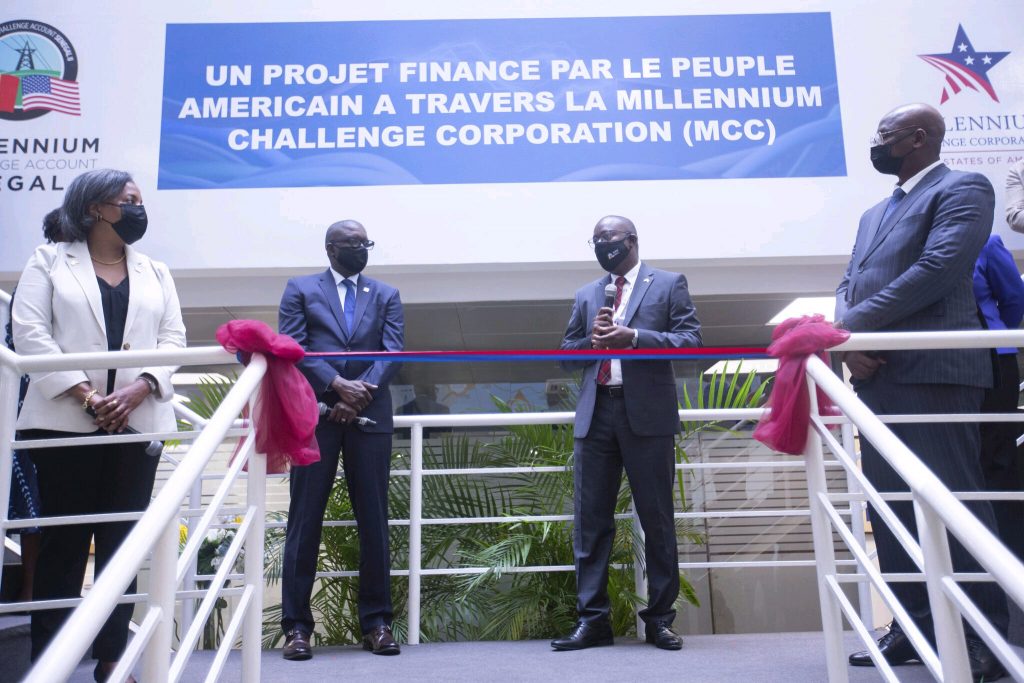
The U.S. commits $550m to boost Senegal’s electricity sector
On September 9, the U.S. Government’s Millennium Challenge Corporation (MCC) officially launched the $550 million MCC–Senegal Power Compact in Dakar. The five-year partnership had been signed since 2018 and will be completed by an additional $50 million commitment from the Government of Senegal. Investments will be made specifically in the strengthening of electricity networks in Dakar along with the boosting of electricity access in peri-urban and rural areas of the south and central regions. “The compact investment is designed to strengthen the power sector, by increasing reliability and access to electricity and aims to help the Government of Senegal establish a modern and efficient foundation upon which the nation’s power system can grow,” the MCC explains. The compact includes in fact three distinct projects: a $376.8m project to modernize and strengthen Senelec’s transmission network, a $57.3m project to increase access to electricity in rural and peri-urban areas, and a $43.5m reform and capacity building project to strengthen the country’s laws, policies and regulations governing the electricity sector. The strengthening of the state-utility’s transmission network will mobilise most of the company’s financing and target high-voltage transmission network in around around greater Dakar. It is notably expecting to pave the way for additional private sector investment in power generation in the future, including gas-to-power and renewable energy sources. Beyond official support from the American government, Senegal has attracted several private American investors into its power sector. The 86.6 MW Cap des Biches power plant for instance was the result of an agreement between ContourGlobal and Senelec executed during the Africa Leaders’ Summit convened by President Barack Obama in 2014. Both companies worked to rehabilitate the former GTI Dakar power station and construct a new thermal facility that remains until today one of Senegal’s top performing power plants.
Read more »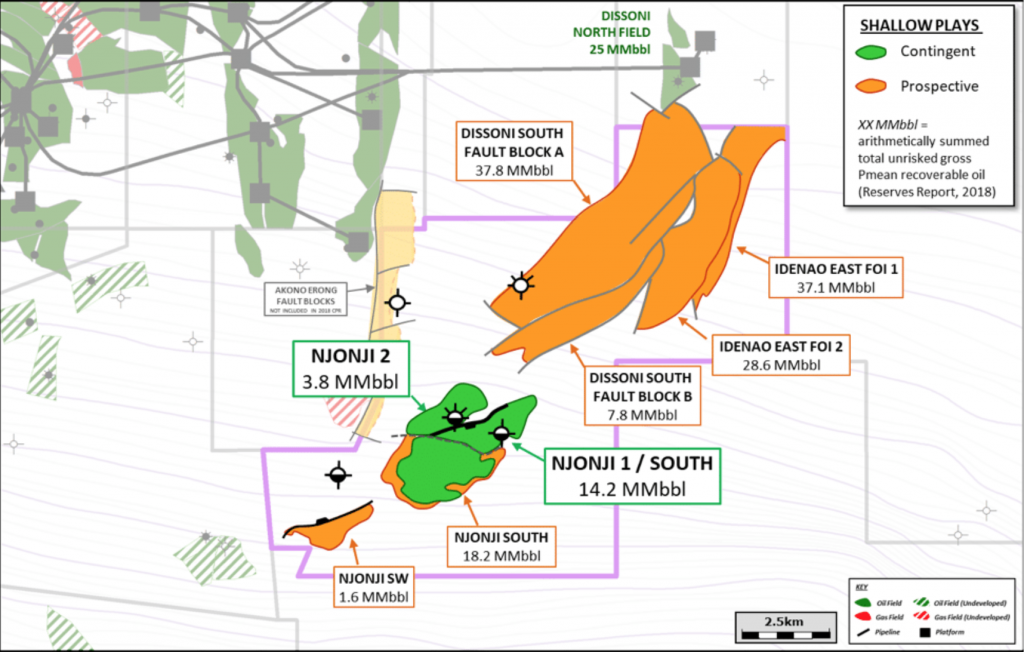
Nigerian trader farms into Thali PSC offshoreCameroun
Private Nigerian trading house Beluga Energy has signed a binding Heads of Agreement with Tower Resources Cameroon last month to acquire a 49% non-operating working interest in the Thali production sharing contract (PSC) offshore Cameroon. As operator, Tower Resources had been looking for a partner for some time in order to drill the NJOM-3 well. Consequently, the farm-out with Beluga Energy covers $15 million towards the cost of that well. With gross mean prospective resources of 111 million barrels across four identified prospects, the Thali PSC could be Cameroon’s next significant shallow water development and sees Beluga Energy entering in a drill-ready asset. Tower Resources has been operating the licence since 2015, when it acquired the block where French major Total had declared two gas discoveries: Rumpi-1 and Njonji-2 (now NJOM-2) and one oil discovery: Njonji-1 (now NJOM-1). Following a reprocessing of all available data, Tower Resouces started planning the drilling of NJOM-3 very early on. However, plans were delayed due first to the lack of site survey data, which was completed and acquired in early 2020, then by the Covid-19 pandemic. Two extensions of the initial exploration periods have provided enough time to drill and complete the well. The last exploration extension period was granted in May 2021 and runs until May 11th, 2022.
Read more »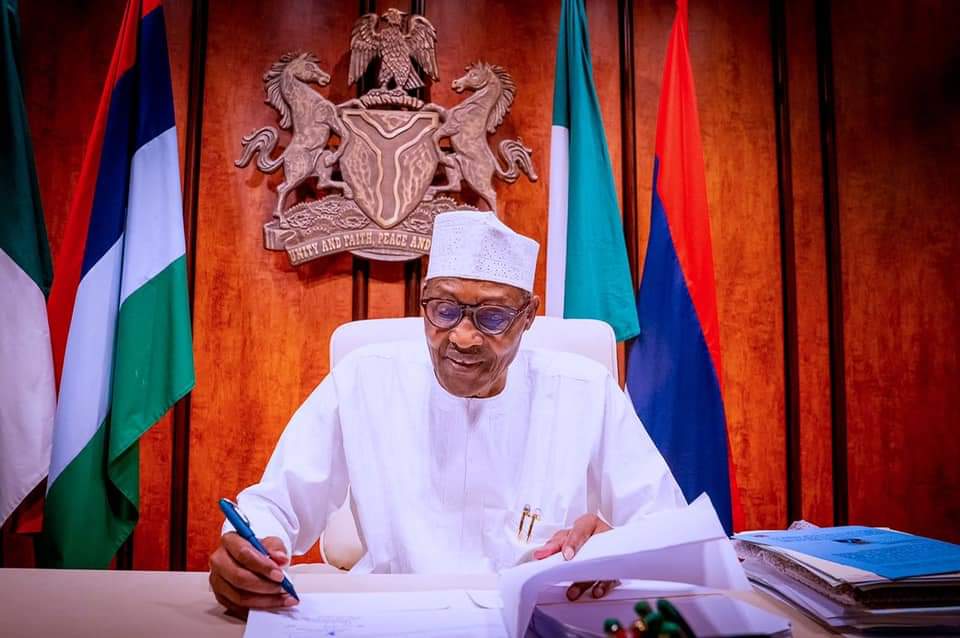
President Buhari has signed Nigeria’s Petroleum Industry Bill into law
It took almost two decades, two historic crashes in commodity prices and two recessions for Nigeria to finally adopt its new Petroleum Industry Bill. Following its passing at both chambers of Parliament in July, the bill was officially signed into law by President Buhari today. The bill is expected to provide much-needed regulatory certainty for investors seeking to do business in Africa’s most populous nation. Nigeria has the world’s eight largest proven gas reserves and is Africa’s largest crude oil producer. However, years of under-investment have left production on a declining trend: in June of this year, Nigeria was producing only about 1.4m bopd and has not been producing over the 2m bopd threshold since 2012. A major factor to judge the efficiency and impact of the PIB will now be its ability to revive deep-water projects that have remained on the shelves for years. IOCs in Nigeria have discovered billions of barrels of oil equivalent offshore which have remained undeveloped because of market conditions and lack of a supportive regulatory framework. The passing of Nigeria’s Deep Offshore and Inland Basin Production Sharing Contract (Amendment) Act in late 2019 had only further jeopardized the economics of most of these discoveries by removing the water depth-based royalty and replacing it with a flat 10% royalty on all deep-water PSC. It had also introduced a price-based royalty adding 0 to 10% depending on the oil price. Will the PIB be able to revive the investment appetite of IOCs for those deep-water projects? Time will tell but time is also of the essence. Only the development of these discoveries has the power to significantly increase Nigeria’s output. Another crucial aspect to take into consideration is the security situation in the Niger Delta. Insecurity and vandalism there are one of the main reasons for investors shying away from Nigeria and for the exit of IOCs out of their onshore and shallow water licenses in the country. It remains until today a major factor preventing Nigeria’s hydrocarbons sector to realize its investment potential. Because host communities will not be receiving the share they asked for (2.5-3% instead of 10%), an appeasement in the Niger Delta is not certain. For the same reason, the PIB is not expected to slow down the pace of divestments by IOCs in the Niger Delta, although the same move will benefit indigenous players with cash at hand.
Read more »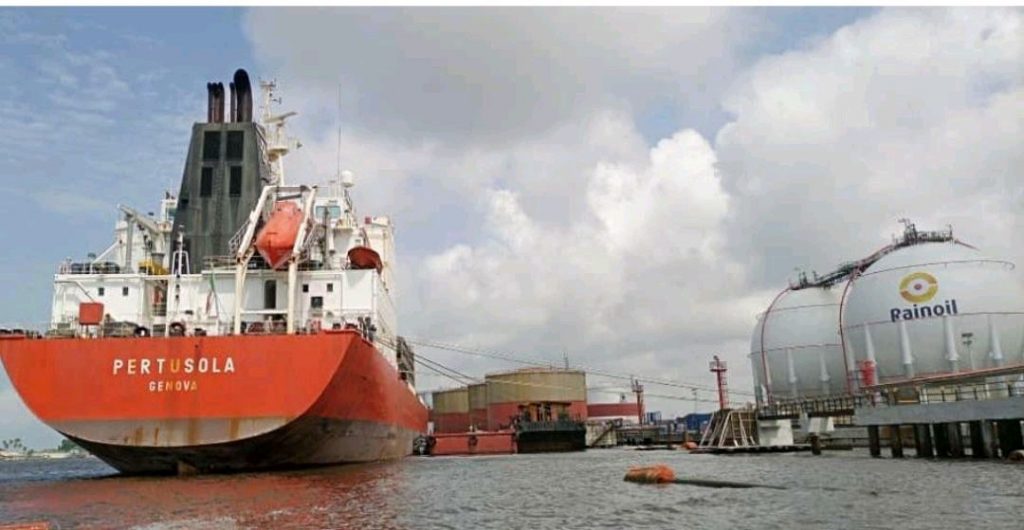
Why Nigeria’s LPG industry is an underrated investment opportunity
With a compound annual growth rate of 27% between 2018 and 2020, Nigeria’s liquefied petroleum gas (LPG) supply is amongst the fastest growing in Africa. Last year, the country absorbed its first million metric tonnes of LPG, up from 840,000 MT in 2019 and 635,650 MT in 2018. And the forecast for further growth is very positive. In a study released in July 2021 for the Clean Cooking Alliance, Fraym estimates that only 15% of Nigeria’s 49m households use LPG as clean cooking fuel. The rest relies on wood, especially in rural areas, or kerosene. The 9m Nigerian households that use clean cooking fuels are obviously concentrated in urban areas, especially in major cities such as Lagos, Ibadan, Benin City, Abuja, Kaduna, Kano and Port Harcourt. They also represent the major consumers of LPG in the country, given that industry and power have remained small LPG off-takers so far. With 40m households yet to have access to clean cooking fuels, the potential is enormous to grow the country’s LPG supply and infrastructure. While most Nigerian households cannot afford LPG, the same study by Fraym also estimates that at least 6m households are urban early-adopters and likely to afford clean cookstoves in urban areas. This is a significat market that most marketers and distributors are currently targeting, and which could potentially afford to spend the annual average of NGN 2,800 per month per household for LPG consumption. The rest of Nigerian households are likely to continue relying on wood (NGN 1,100/month) and kerosene (NGN 1,200/month), at least for the time being. But the opportunity is not only in reaching out to the under-served. Nigeria still imports about half of its LPG supply, and while the growth of imports has been slowing down, it is still growing. Research by Hawilti shows that LPG imports, mostly from the USA and Equatorial Guinea, represented 52.3% of total Nigerian LPG supply in H1 2021 compared with an average of 53% in 2020. Source: PPPRA Nigerian domestic LPG suppliers remain limited, with Nigeria LNG representing 75% of all domestic LPG supply in H1 2021. New domestic suppliers have emerged this year, including in Kwale, Oredo, Egbaoma and Rumuji. But their production capacities remain small compared to market needs. Put simply, LPG is a tremendous import substitution business in Nigeria. Whoever produces will find a market, providing it is ready to sell domestically instead of seeking foreign exchange on the global export market. Meanwhile, infrastructure is being expanded. Three new LPG terminals are currently under-development: Ardova’s 20,000MT facility and Gas Terminalling’s 5,000 MT facility in Lagos and Chimons Gas’ 5,500 MT facility in Warri (Delta State). They are all expecting commissioning before the end of 2022. Ardova’s 20,000 MT storage facility in Lagos will notably act as an import and blending terminal and will be blending propane and butane once commissioned, a company executive confirmed Hawilti. It will also be able to receive LPG cargoes, be them imported or from Nigeria LNG. Meanwhile, Banner Energy continues to progress towards financial close for its own $65m, 13,000 MT LPG terminal in Akwa Ibom. It would be Southeast Nigeria’s biggest facility, and Banner Energy has appointed a financial advisor to progress to financial close. LPG will remain a hot commodity in Nigeria for years to come. Supply disruptions are currently sending prices up, further supporting market activity with several new private sector players eye trading opportunities in the short and medium-term. But the real challenge for the industry’s growth will remain that of affordability and finding out the right business models that work out for Nigeria’s 40m households in need of healthy and clean cooking fuels.
Read more »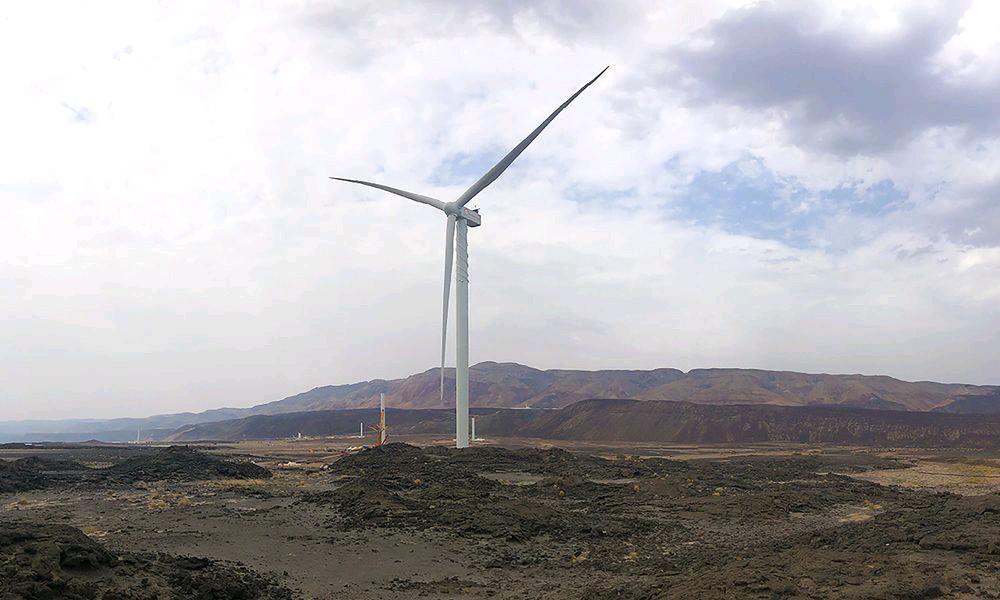
First wind turbine installed at Djibouti’s Goubet wind energy facility
In early August, Siemens Gamesa completed the installation of Djibouti’s first wind turbine at the Goubet wind farm in Djibouti. The 59 MW facility has been under construction since October 2020 and will be Djibouti’s first utility-scale wind project and the country’s first independent power producer (IPP). It is the result of a strong involvement into the project by the Africa Finance Corporation, which leads a consortium of Dutch investors, the Climate Fund Managers and Great Horn Investment Holdings (GHIH) within the project’s company, Red Sea Power. The AFC has been leading the project’s development since 2017 and developed it from concept to bankability before securing the 25-year take-or-pay power purchase agreement (PPA) with state-utility Électicité de Djibouti (EDD). Ghoubet notably aligns with Djibouti’s Vision Djibouti 2035, under which the authorities want to transition from the country’s complete reliance on domestic thermal energy in 2010 to 100% of renewable electricity sources by 2030. Details of the Goubet Wind Energy Facility are available in the “Projects” section within your Hawilti+ research terminal.
Read more »
OML 17 output up 40% only seven months after its acquisition by Heirs Oil & Gas
Heirs Holdings and its affiliates Transcorp announced at the start of this year a transformative acquisition of a 45% participating interest in OML 17 from the Shell Petroleum Development Co. (SPDC) joint-venture. The transaction remains one of the largest oil & gas financings in Africa with a financing component of $1.1bn. Seven months later, new operator Heirs Oil & Gas (HHOG) has already increased production by 40% and reached a production of 40,000 boepd. The information was revealed by HHOG’s new CEO, Osayande Igiehon and announced by Heirs Holdings Chairman Tony Elumelu in early August. Upon its acquisition, OML 17 had a production capacity of 27,000 barrels of oil equivalent per day (boepd) and 2P reserves of 1.2 billion barrels of oil equivalent (boe) according to Heirs Holdings’ estimates, with an additional 1 billion boe of resources for further exploration potential. The ability of a new local player to take over an onshore asset so efficiently and increase output in less than a year is an encouraging achievement as Nigeria still struggles to increase oil & gas production. Meanwhile, industry sources have confirmed to Hawilti that OML 17’s Agbada non-associated gas plant is currently in commissioning phase. The 80 MMscfd facility will be upgrading existing gas infrastructure developed by Shell during its years of operatorship.
Read more »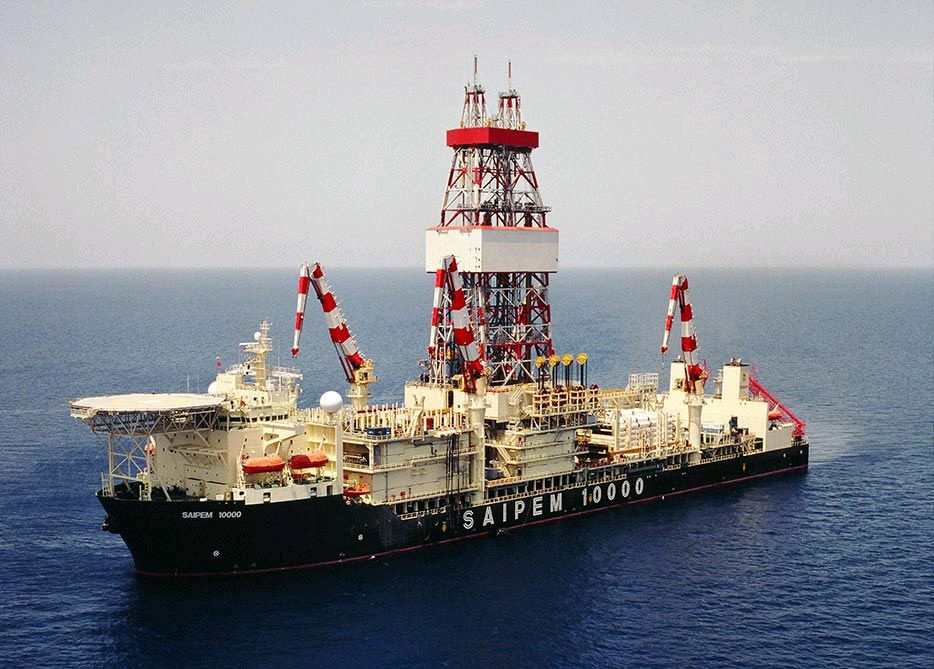
Good Things Come in Threes: after Angola and Ghana, Eni strikes oil in Côte d’Ivoire
Italian major Eni has announced this month a major light oil discovery (40° API) at its Baleine-1X exploration well in block CI-101 offshore Côte d’Ivoire. The company had signed the contract for the block’s license back in March 2017 and operates it with a 90% interest. This marks the third oil discovery by the company this year following Cuica in April offshore Angola and Eban in July offshore Ghana. The Baleine prospect was drilled in water depths of about 1,200m by the Saipem 10,000 drillship and reached a total depth of 3,445m. It discovered oil in two different stratigraphic levels and will now be appraised and evaluated to assess the significant upside potential of the overall structure that extends into block CI-802, another block which was just awarded to Eni back in June 2021. According to Eni, the potential of the discovery can be preliminarily estimated at between 1.5 and 2bn barrels of oil in place and between 1.8 and 2.4 trillion cubic feet (Tcf) of associated gas. “Along with the appraisal programme, Eni and Petroci Holding will also start studies for a fast-track development of the Baleine discovery,” the company said in a statement yesterday. Eni has been increasing its exploration portfolio in Côte d’Ivoire in recent years: it had been awarded Block CI-205 in 2017 and Blocks CI-501 and CI-504 in 2019. It is also struggling to maintain its share of African oil production and has been faced with decreasing output for several years. In Q2 this year, its oil & gas production from sub-Saharan Africa stood at about 293,000 boepd compared with 399,000 boepd in Q2 2019 and 386,000 boepd in Q2 2020. Source: Government of Côte d’Ivoire The opening of a new play concept in Côte d’Ivoire’s sedimentary basin is also very good news for a country where oil production has failed to meet expectations and has been dropping significantly in recent years. Crude oil production had fallen to only 20,690 barrels of oil per day (bopd) in Q1 this year, against a daily average of over 40,000 bopd back in 2016. Most of the oil produced comes from the Baobab deep-water field operated by Canadian Natural Resources (CNRL) where production started in 2005. Côte d’Ivoire remains however a strong gas producing market with good domestic off-take infrastructure from the power sector.
Read more »
Why Africa’s energy transition is only happening in South Africa
In more ways than one, the concept of energy transition makes no sense for African countries. The energy transition model by which fossil fuels were going to be replaced with renewable energy emerged out of developed countries, where low population growth and few incremental energy needs have paved the way for new planning strategies to reorganise the energy mix towards cleaner sources of electricity generation. For the same reason, the energy transition is mostly happening in countries where total energy supply and energy consumption has stabilised for over a decade. However, African countries are still under development and the continent counts over 600m people without access to electricity. Because of Africa’s continued demographic growth, the number of people without access to power is likely to rise. Lack of industrialisation along with uneven economic development means that Africa is also one of the world’s smallest carbon emitter. From a policy and development perspective, the priority will very much remain on adding as much power generation capacity as possible along with expanding electricity transmission and distribution infrastructure to lift people out of poverty. Before Africa can transition its energy mix, it needs to significantly expand and transform it. In doing so, renewable energy capacity will be growing, but not to the extent where it can replace existing electricity generation facilities. South Africa is the exception to the story. First, because its energy supply has remained more or less the same for a decade; its electricity consumption, for instance, has averaged 230 TWh a year for about ten years now, according to IEA data. South Africa is part of the G20, has started its demographic transition and has a relatively easy access to finance. Second, because well over 80% of the country’s electricity still comes from coal facilities, many of which are aging. A relatively stable electricity supply along with a heavy carbon-emitting electricity mix naturally paved the way for South Africa to transition its energy mix. South Africa’s energy transition strategy The country’s strategy is very much targeted at relying less on coal and more on solar, wind and gas. In fact, its 2019 Integrated Resource Plan (IRP) provides for the decommissioning of over 24 GW of coal power sources within the next 10-30 years. Natural gas will become an energy fuel for the country, especially when it comes to converting some of its diesel and coal facilities. The country notably commissioned several power plants expected to run on gas but currently running on diesel: Ankerling (1,327 MW), Gourikwa (740 MW), Avon (670 MW), and Dedisa (335 MW). In the IRP of 2019, South Africa reiterated a long-standing commitment to natural gas, by reaffirming its ambition to convert the four stations to LNG or natural gas, and commission an additional 3,000 MW of greenfield gas-to-power capacity by 2030. Several such projects are already well advanced, including the conversion of the Ankerling and Gourikwa stations. But the real story of the past few years has been that of wind and solar. South Africa has become an undisputed renewable energy leader on the continent, attracting local and global investors from Europe, China, the Middle East and the Americas into its now famous Renewable Energy Independent Power Producer Procurement Programme (REIPPPP). From 2012 to 2015, South Africa awarded 6.3 GW of renewable energy capacity via windows 1, 2, 3, 3.5 and 4. Thousands of jobs were created, while attracting billions on foreign direct investment. While the projects from Window 4 are just reaching commissioning stage, South Africa just closed its Risk Mitigation IPP Procurement Programme (RMIPPPP), awarding another 2 GW of projects in March 2021. And this is only the beginning for the country’s clean energy sector. The need to ensure reliable and affordable energy supply post Covid-19 has accelerated the timeline of the future REIPPPP windows. Window 5 is currently underway with winners expected to be announced by the end of the year. Meanwhile, Window 6 is expected to be launched this year to announce the winners in May 2022, while Window 7 would be launched in 2022 to that winners are awarded in Q3 of the same year. Finally, South Africa is also planning a storage and gas-specific windows, with the former launched in November this year while the latter would see its request for proposal issued in Q1 2022.
Read more »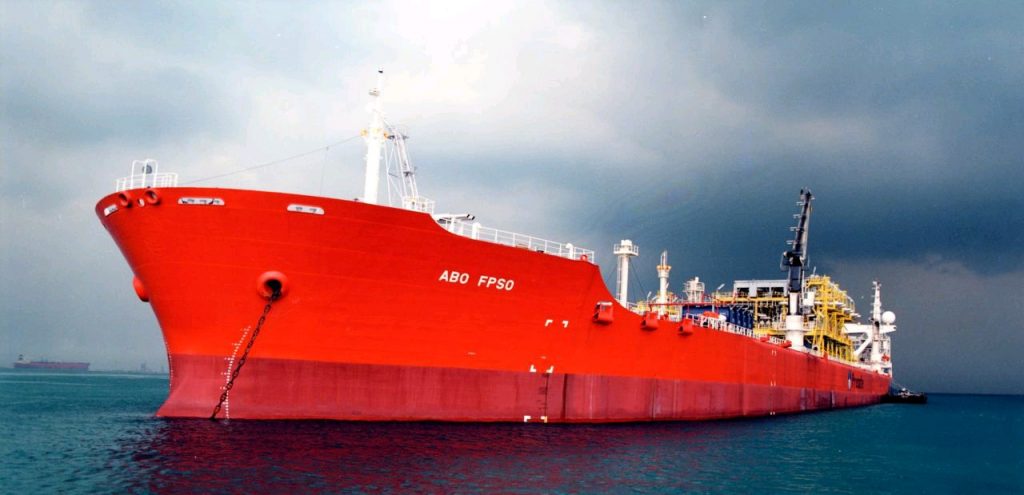
African Oil Producers Have Missed on Over $29bn of Oil Revenue Since January
By and large, 2021 has been a missed opportunity for African oil producers. While the continent’s hydrocarbons sector yielded several discoveries and Nigeria finally signed its landmark Petroleum Industry Bill into law, decreasing output across the board means that African producers have not maximised benefits from the strong rebound in commodity prices. This is particularly the case with sub-Saharan Africa’s three biggest oil producers Nigeria, Angola and the Republic of Congo. Despite OPEC quotas increasing, and leaving room to ramp domestic production back up, the three countries have been unable to pump more barrels. In fact, the difference between their allocated OPEC production quotas and their actual production reached as much as 548,000 barrels per day in August this year. From January to October 2021, the three countries have missed on over $29bn worth of oil production according to Hawilti’s research and estimates. Volumes differentials between OPEC quotas and actual production increased to 30,000 bopd for Congo in August. They are even more significant for Nigeria and Angola, especially at a time when their oil prices reference is high: Nigerian and Angolan oil prices stood constantly above $70/bbl between July and September 2021. Both the Girassol Blend and Bonny Light were selling at an average of over $80/bbl in August. Source: OPEC Nigeria’s oil sector has been massively underperforming this year so far. Its oil GDP was down -12.65% in Q2 2021, its fifth consecutive negative quarter. Despite setting an oil price benchmark of $40/barrel in its 2021 budget, the country is also failing to meet its oil revenue target. Between January and May 2021, gross oil revenue stood at NGN 1,490.76 bn against a pro-rata target of over NGN 2,000 bn. Because of its inability to increase production, Nigeria is very likely to miss its yearly gross oil & gas revenue target of NGN 5,185.57 bn. Reasons abound, but chief amongst them is the lack of investment, especially from international oil companies (IOCs) in the Niger Delta, where the focus for the past decade has primarily been on divesting. Meanwhile, new local operators who have taken over critical onshore assets have been left cash strapped by the double oil price crash of 2014-2016 and 2020. Coupled with aging infrastructure, continued insecurity and repeated vandalism on pipelines, Nigeria’s oil production is simply unable to meet the needs of the hour. The declaration of Force Majeure by Shell at the Forcados oil terminal in August only aggravated the situation, with the country loosing 2.6m barrels of production between July and August 2021. Production and export figures from the country’s five IOCs-operated onshore oil terminals are the most representative of Nigeria’s current situation. While the Bonny, Brass, Qua Iboe, Forcados and Escravos terminals pumped about 165.5m barrels in H1 2020, volumes were down below 130m barrels in H1 this year according to data from the Department of Petroleum Resources (DPR). Source: Department of Petroleum Resources Hopes are that the newly signed Petroleum Industry Act will both lead to the development of undeveloped deep-water discoveries by IOCs while unlocking fresh capital into brownfield opportunities with local operators onshore and in shallow water. Hawilti’s research on M&A deals in the country’s hydrocarbons sector suggests investors are increasingly looking at brownfield investments in the region, at a time when several key local operators are looking at farm-in, technical and capital partners. Meanwhile, Angola also continues to suffer from under-investment in the past decade even though the outlook for its oil & gas sector is positive. Recent fields put into production such as Zinia 2 in May and Cuica in July have done very little to reverse production decline and the country had to revise its yearly production target down to 1,193,420 bpd this year. However, Angola had already met its oil revenue target for the year by the end of Q3, with Kz 4,200 bn already collected in the first nine months of the year against a yearly target of Kz 4,059.4 bn. The country’s short and medium-term outlook is also positive because IOCs have been extremely responsive to the bold policy moves of the Lourenço administration. Most majors operating in the country have already approved new projects, especially subsea tie-backs, infill drilling and marginal fields developments ventures. Those will be supporting production in the short-term, while three new FPSO-based production hubs are in the making by TotalEnergies, Eni and BP.
Read more »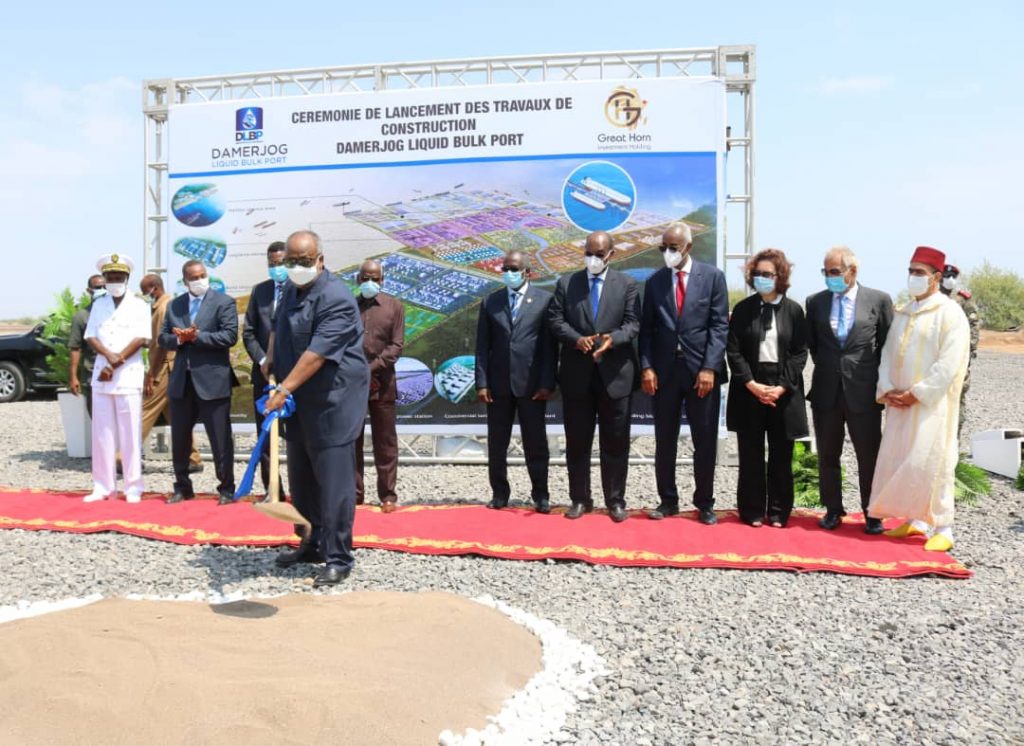
Despite Lack of Natural Resources, Djibouti Attracts Major Investments in Infrastructure
Djibouti has no natural resources, a land area of only 23,200 km2 and a population of 1m. Yet, the country has attracted billions of dollars of investments over the past decade, making some of Africa’s biggest economies look up to it with envy. Foreign investors from China, the Middle East and the United States are injecting billions into the country’s ports, oil & gas terminals, free trade zones and a 750km rail line that serves Ethiopia’s population of over 110m. That railway line alone can carry 2,600 tonnes of wheat and fertilisers and 110 containers per trip. At a time when African countries continue to decry the lack of investment into the continent’s infrastructure, Djibouti is forging ahead and using its geographical location to build the trade and services infrastructure of tomorrow. Geography is the country’s biggest asset: Djibouti is located on the strait of Bab-el-Mandeb on the north-east edge of Africa, where 30% of the world’s shipping passes on its way to the Suez Canal. Coupled with political and economic stability, Djibouti offers investors a safe haven to tap into the world’s most dynamic globalization routes while serving Africa’s growing population. It also helps that its neighbours Eritrea and Somalia continue to be plagued with insecurity and instability. Djibouti’s ports and container terminals remain amongst the most productive in the world. According to a new global container port performance index compiled by the World Bank and IHS Markit, its port is even the most efficient in Africa measured by minutes per container move. With such efficiency, Djibouti’s goal of emulating Singapore as a leading maritime trading hub is within reach. To cement its position as the world’s future big trading hub, Djibouti recently set up a sovereign wealth fund with a view to finance about $1.5bn of domestic business activity over the next decade. In parallel, the country has embarked on significant infrastructure expansion with the Djibouti Damerjog Industrial Development Free Zone, echoing Singapore’s own Jurong petroleum and petrochemicals hub. The industrial park represents a 15-year undertaking and is expected to house integrated energy and petrochemicals facilities and further position the country as a strategic energy and industrial hub meeting the needs of the East African sub-region. While the complex was initially conceptualised to export South Sudanese oil, it eventually developed into a mega industrial and petrochemicals scheme. The ultimate oil complex will cover 80ha, starting with the development of 32ha comprising of 300 000 m3 storage tanks, an oil jetty and railway infrastructure connected to the Nagad Station, and from there to the Djibouti-Addis Abebe railway line. It will also include the construction of a 6 million tonnes refinery by the China Marine Bunker Co. Ltd (CHIMBUSCO) that will refine Saudi and Sudanese crude into marine fuels with a sulphur content of no more than 0.50%S, along with diesel, naphtha and LPG. The facility would primarily meet demand for Djibouti and Ethiopia and be followed by the construction of an onshore refinery. The industrial park will also benefit from a 150MW gas-to-power plant, starting with a 20MW hybrid power station expected to be commissioned in 2022. Such power supply will be key for all upcoming manufacturing units in the park built by Chinese investors and including steel, metal mesh, PVC pipes and glass. The anchor project for the whole complex is the Damerjog Liquid Bulk Port, Djibouti’s seventh port, built by Moroccon contractor SOMAGEC. President of Djibouti Ismaïl Omar Guelleh laid the foundation stone there in September 2020. Details on the Damerjog industrial park and liquid bulk terminal can be found in the “Projects” section within your Hawilti+ research terminal.
Read more »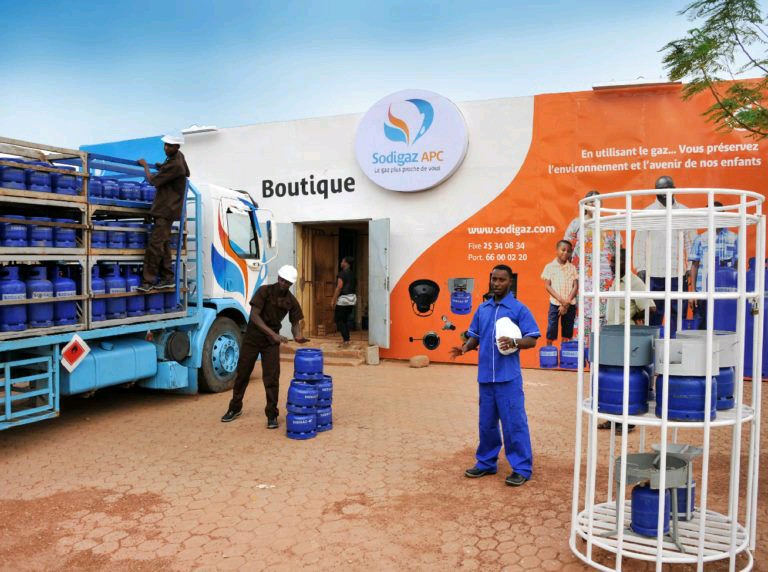
Amethis successfully exits Burkina Faso’s leading LPG distributor
Following its investment in Burkina Faso’s leading LPG distributor Sodigaz APC in 2017, Amethis has just sold its 22% stake in the company to African Infrastructure Investment Managers (AIIM). Over the years, Sodigaz has built a 60% market share of Burkina Faso’s LPG distribution market and currently relies on a network of 2,200 gas resellers. Since its beginning in 1977, the company has grown to a 780-employee structure known for its commitment to gender equality. The entry of AIIM into Sodigaz’ capital takes place as West Africa’s LPG market experiences significant growth. As a result, the company has recorded an annual growth rate of over 14% over the past four years and expanded into neighbouring countries such as Benin. As West Africa’s middle class expands and governments seek to fight deforestation and promote public health, the demand for a clean cooking fuel such as LPG is on the rise. This is a trend that applies to the rest of the region and is increasingly generating the interest of investors, especially private equity players. Earlier this year for instance, Investisseurs & Partenaires’ fund I&P Afrique Entrepreneurs 2 made a $3m equity investment in XpressGas, Ghana’s fastest growing LPG distributor.
Read more »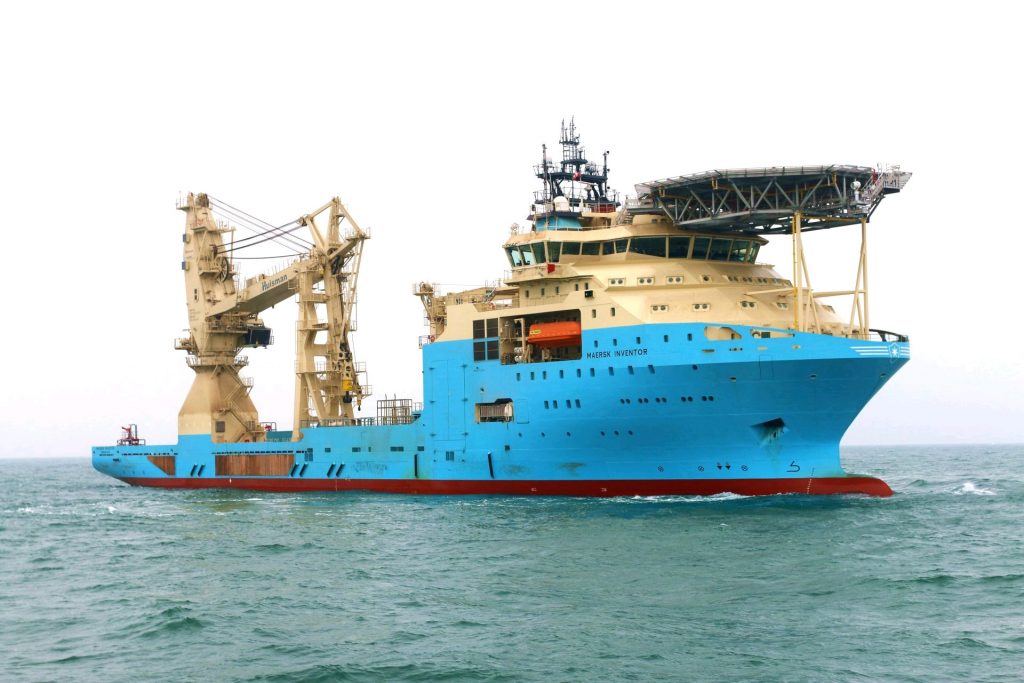
Maersk wins Mooring System contract on Kome-Kribi 1 FSO in Cameroon
Maersk Supply Service has just been awarded a contract by the Cameroon Oil Transportation Company (COTCO) for Phase 2 of the mooring system maintenance project on the Kome-Kribi 1 FSO (Kome-Kribi 1 Marine Terminal) offshore Douala. The marine terminal forms the last part of the 1,070km Chad-Cameroon Oil Export Pipeline that evacuates Chad’s oil to global markets. Under the project, Maersk Supply Service will replace two link arms on a yoke mooring system on the Kome-Kribi 1 Marine Termina. This notably follows Phase 1 of the project, during which Maersk Supply Service had already carried out the design, engineering, procurement and installation of a temporary redundancy system. The contract comprises of the full project management and engineering and the two-month offshore operations, which are scheduled to commence in Q4 2022. They will require an I-class Subsea Support Vessel (SSV) from the Maersk Supply Service fleet, as well as two Anchor Handling Tug Supply (AHTS) vessels, which will also be employed for station keeping of the FSO. Despite being under-utilised, the Chad-Cameroon Pipeline continues to generate revenue for the State of Cameroon with transit fees standing at FCFA 11.59bn ($21m) between January and April 2021. Details on the Chad-Cameroon Petroleum Development and Pipeline Project are available in the “Projects” section within your Hawilti+ research terminal.
Read more »